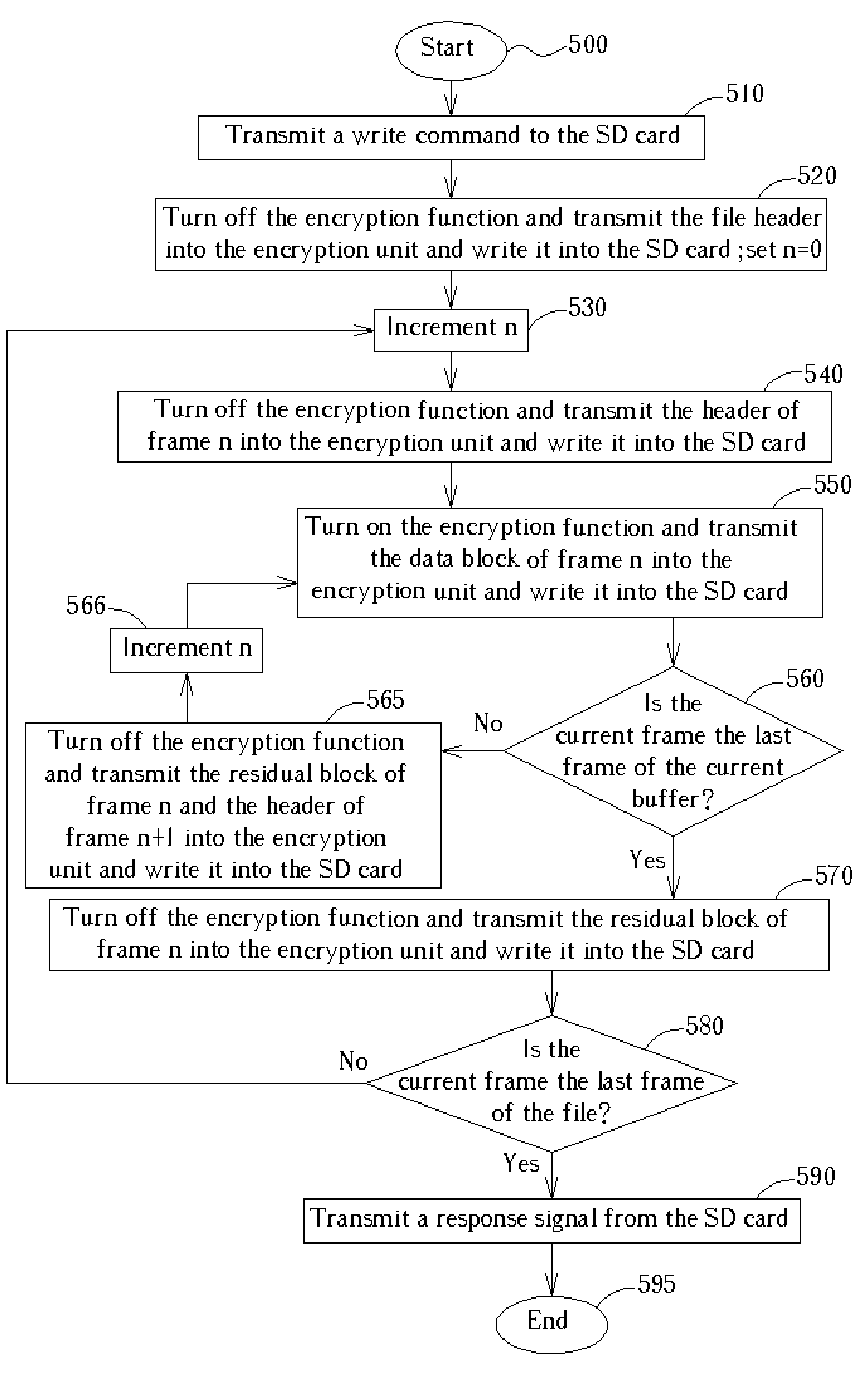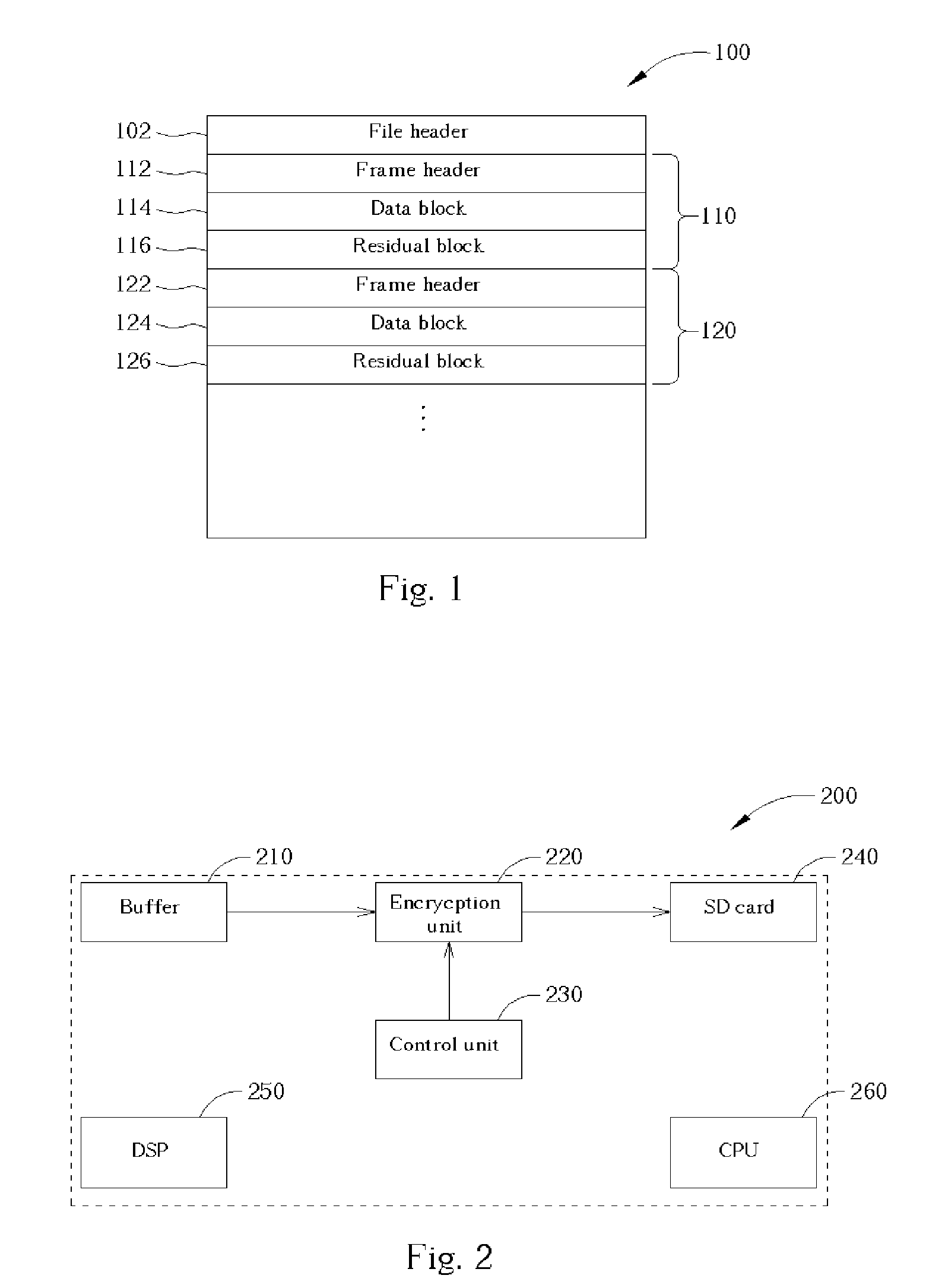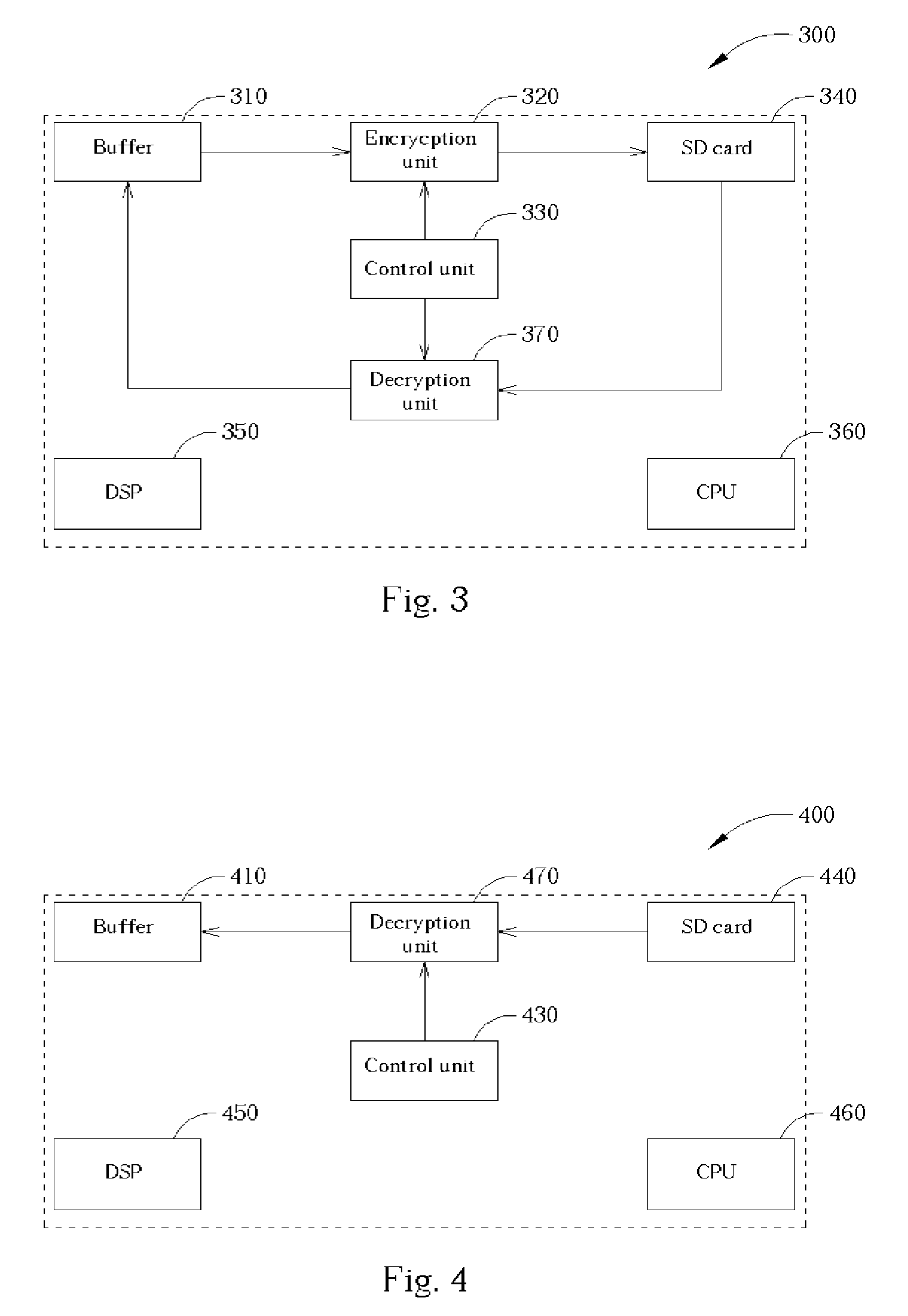System and method for accessing discrete data
a technology of discrete data and access methods, applied in the field of system and method for accessing discrete data, can solve the problems of consuming a large amount of cpu resources and processing time, wastes a lot of central process unit resources, and reduces the number of memory accesses
- Summary
- Abstract
- Description
- Claims
- Application Information
AI Technical Summary
Benefits of technology
Problems solved by technology
Method used
Image
Examples
first embodiment
[0023] Please refer to FIG. 2. FIG. 2 is a block diagram of the present invention discrete data accessing system. Reference number 200 is a digital audio player. As illustrated in FIG. 2, the audio player 200 contains a buffer 210, an encryption unit 220, a control unit 230, a SD card 240, a DSP 250 and a CPU 260. When writing a file into the SD card 240 with the present digital audio players 200, for example, when recording an audio file by a digital recorder, the DSP 250 transforms the voice file into digital discrete signals with a predetermined format and writes the file header and the data following the file header into the buffer 210. Meanwhile, the CPU 260 sends a write command to the SD card, and then processes the data stored in the buffer 210 in turn, that is, transmits the file header, the headers, the data blocks and the residual bocks of all frames into the encryption unit 220. When a digital recorder records an audio file, the data format of the file to be recorded is ...
second embodiment
[0025] Please refer to FIG. 3. FIG. 3 is a block diagram of the present invention discrete data accessing system. Reference number 300 is a digital audio player. As illustrated in FIG. 3, the audio player 300 comprises a buffer 310, an encryption unit 320, a control unit 330, a SD card 340, a DSP 350, a CPU 360, and a decryption unit 370. When the digital audio player 300 is going to read a file from the SD card 340, for example, when an MP3 player is going to play a song stored in the SD card, the CPU 360 transmits a read command to the SD card, then transmits the file header, the header, the data block and the residual block of each frame to the decryption unit 370. The CPU 360 gets the knowledge of the format of the file from the header, that is, the knowledge of the lengths of each data contained in the file and the corresponding regulation according to the adopted decryption algorithm. Therefore, the control unit 330 is capable of switching on / off the decryption function of the...
third embodiment
[0026] The claimed invention may be applied to some playing-only system, such as an MP3 player without recording function. Please refer to FIG. 4. FIG. 4 is a block diagram of the present invention discrete data accessing system. Reference number 400 is a digital audio player without recording function. The digital audio player 400 comprises a buffer 410, a control unit 430, a SD card 440, a DSP 450, a CPU 460 and a decryption unit 470. Compared to the digital player 300 illustrated in FIG. 3, the digital audio player 400 is not equipped with the encryption unit that is needed in writing files to the SD card, and the scenario of reading files from the SD card 440 is as the same as the description of the embodiment illustrated in FIG. 3.
[0027] According to the CPRM algorithm, the residual blocks and the frame headers do not need to be encrypted. This is the reason why when writing a file into a SD card, the encryption function of the encryption unit can be turned off while the CPU co...
PUM
 Login to View More
Login to View More Abstract
Description
Claims
Application Information
 Login to View More
Login to View More - R&D
- Intellectual Property
- Life Sciences
- Materials
- Tech Scout
- Unparalleled Data Quality
- Higher Quality Content
- 60% Fewer Hallucinations
Browse by: Latest US Patents, China's latest patents, Technical Efficacy Thesaurus, Application Domain, Technology Topic, Popular Technical Reports.
© 2025 PatSnap. All rights reserved.Legal|Privacy policy|Modern Slavery Act Transparency Statement|Sitemap|About US| Contact US: help@patsnap.com



